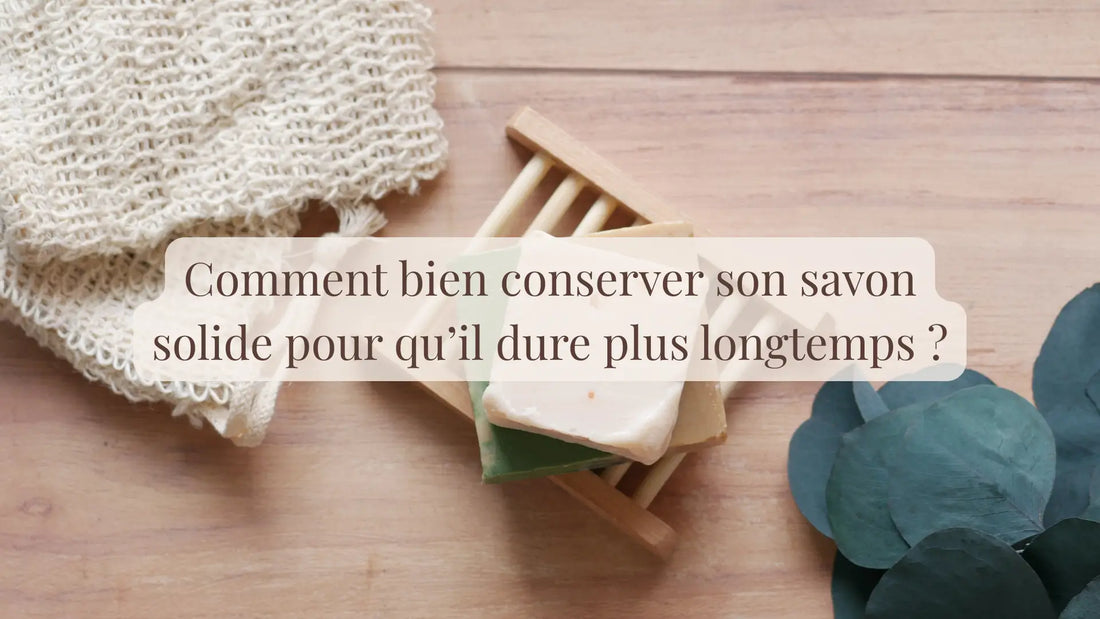
How to properly store your solid soap so that it lasts longer?
share
Solid soap is much more than just a cleansing product. Handmade, natural, and often superfatted, they are kind to both your skin and the environment. But to take full advantage of all their benefits, you still need to store them properly. Here are my simple and effective tips for extending their lifespan while maintaining their quality and fragrance.
Why should you store your solid soap properly?
A poorly stored soap is a soap that melts quickly, becomes soft, sticky, loses its fragrance or does not lather well. It's a shame not to be able to use it, especially when you choose natural or artisanal soaps, which are often richer in vegetable glycerin or precious oils!
Storing it properly also means making the pleasure last. You'll enjoy its benefits, pleasant texture, and aroma for longer, while reducing waste and frequent purchases. In short: a good move for you and for the planet!
Where should you store your solid soaps while waiting to use them?
When I have several soaps in reserve, I keep them away from moisture, in a linen closet or dry closet. This allows them to continue drying naturally, sometimes for several weeks.
This "resting" period is even beneficial: the soap hardens, foams better and melts less quickly once used. This is called curation .
And as a bonus, it will subtly scent the laundry or the room where you have stored it! You can also slip it into a pouch or sachet, then store it in a drawer leaving it slightly open, or place it on a small piece of natural fabric.
The right actions to take after each use
The key to long-lasting soap is to let it dry properly between uses. After showering or washing your hands, avoid placing it on a stagnant surface or in a container that retains water.
Personally, I always make sure to place my soap on a well-draining surface, away from splashes. Solid soap, even natural soap, can become sticky if left wet for too long. Soap that's too hot or still soft can lose its texture and fragrance.
Choosing the right soap dish or accessory
The choice of soap dish plays a central role. I always prefer ventilated soap dishes, with holes or grooves that allow water to drain. Magnetic holders are also a practical and hygienic option: the soap stays suspended, dry.
Tip: Avoid leaving your soap in a sisal bag after use. While it exfoliates well, it retains moisture and can soften the soap. Use it when washing, then let the soap air dry on its own.
In the store, several models of soap dishes are available depending on your preferences and the space you have available.
Traveling with your solid soap: how to transport it without damaging it?
When I go away for the weekend or on vacation, I always take a bar of soap with me. It's practical, lightweight, and plastic-free. But be careful: to transport it properly, I let it air dry for a few hours before slipping it into a soap box or fabric pouch .
A still-damp soap enclosed in an airtight container risks "sweating" or even softening completely. Choose a well-ventilated container, or a natural pouch if you're traveling light. And upon arrival: take the soap out again so it can breathe again!
A well-preserved solid soap is a soap that lasts, lathers generously, retains its fragrance, and above all, provides you with a truly pleasurable experience. With a few simple steps (let it dry, protect it from moisture, store it properly), you enhance both your purchase and the craftsmanship behind it.
Take care of your soaps as you take care of yourself: with gentleness, attention, and simplicity.




